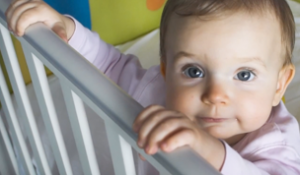Every parent should know the flame retardants content in the products they purchase. Many decades ago, house fires were a common and often deadly threat. From the use of fireplaces for heating to the fallibility of early electrical wiring systems and the widespread practice of smoking indoors, there were a lot of fire hazards present in early mid 20th century homes. This led scientists to develop a range of flame-retardant chemicals to add to common household items (in order to slow the spread of house fires). During the 1970s, these chemicals became required by law in a range of different products.

Even today, in an era when we know so much more about how to prevent fires from starting, these flame retardants are still required in some products and recommended in many others. Governments take a “better safe than sorry” attitude and suggest that flame retardants be added to a wide array of both household and personal items, despite the fact that their efficacy has been largely disproven in recent years.[1]The problem, of course, is that they may not in fact be safe: An increasing body of research has linked flame retardants to a number of serious health problems, with babies and children being the most vulnerable.
Where Are Flame Retardants Found?
Flame retardants are found throughout most American homes. They are typically present in high concentrations in furniture cushions, carpeting, mattresses, plastics (such as those used for TV stands, shelving units, and so on), and electronics (including small appliances). Household wire insulation, some drapery and upholstery, and even some clothing items and baby products may also contain flame retardants.[2]
How Dangerous Are Flame Retardants to Human Health?
Back in 2005, when news of the toxicity of a class of fire retardants called PBDEs (polybrominated diphenyl ethers) hit the mainstream media, many informed parents and environmentalists breathed a sigh of relief. Finally, they thought, toxic fire retardants would be banned from their homes. Unfortunately, while PBDEs were indeed banned from American-made products that year, what replaced them in many products turned out to be just as harmful. Today, many products are treated with a compound known as TDCIPP (or “chlorinated tris”). TDCIPP is simply a chlorinated version of brominated tris, a chemical that was so closely tied to DNA mutations and cancer that it was banned from use in child’s products back in 1977.[3]
Meanwhile, a number of imported products still circulating on the market contain PBDEs. This includes baby products, particularly car seats, changing table pads, crib mattresses, nursing pillows, and nap mats. This is concerning because, as reported in the Washington Post, “Studies in laboratory animals and humans have linked the most scrutinized flame retardants, called polybrominated diphenyl ethers, or PBDEs, to thyroid disruption, memory and learning problems, delayed mental and physical development, lower IQ, advanced puberty and reduced fertility… At the same time, recent studies suggest that the chemicals may not effectively reduce the flammability of treated products.” [4]
All of the chemicals mentioned above are doubly hazardous because they do not fully bond with the products they are applied to. This means that, as the products are subjected to normal use, they emit toxic particles. These particles end up in household dust, which we then inhale. We are therefore exposed to these toxic compounds throughout the day, not just when we’re using the actual products that contain them.
Due to the chronic exposure described above, the toxins from flame retardants gradually build up in our bodies. Scientists estimate that 90% of Americans have flame retardant chemicals in their bodies, with most people having six or more types in their system. Furthermore, flame retardants often accumulate in breast milk; children have been shown to have levels of flame retardants “that are as much as five times higher than their mother’s.” [5]
Steps Parents Can Take to Reduce Their Family’s Exposure to Flame Retardants
Currently, there are no flame retardants on the market that have conclusively been proven safe. Therefor it’s strongly advised that parents avoid exposing themselves and their families to any of them. This is, of course, not usually completely possible. There are a lot of things you can do to reduce your family’s overall lifetime exposure to these hazardous chemicals:
- Avoid buying any secondhand foam-containing products unless they were manufactured after 2005. This is especially important when it comes to purchasing baby’s and children’s products.
- Check where imported household products, personal products, and electronics come from to rule out the possibility of them containing PBDEs.
- Only buy baby products new and only buy them from manufacturers that no longer use any flame retardants. In many regions in the USA, baby product manufacturers are no longer legally required to add flame retardants to their products. However, some still engage in this antiquated practice regardless. Try to verify that a manufacturer no longer uses any flame retardants before purchasing their products for your infant/toddler. Ideally, you should purchase all-natural organic baby clothes and baby products wherever possible.
- Get rid of your old furniture and replace it with new flame retardant-free furniture. New regulations in many states make it easier for furniture manufacturers to sell products without flame retardants. However, the availability of toxin-free furniture is still hit-and-miss. Call the manufacturer before you buy new furniture to make sure they do not use flame retardants.
- Use a vacuum cleaner fitted with a HEPA filter. HEPA filters are much more effective at removing small particles from the air (including allergens and contaminants) than non-HEPA filters. You may also wish to install high efficiency HEPA-filter air cleaners in your home.
- Never remove old carpeting by yourself. The padding below your carpets is probably saturated with toxic flame-retardant compounds. These will be released into the air by improper handling. Have your old carpeting professionally removed and talk to an indoor air quality expert. Containment and how to limit your family’s exposure to toxic dust during the process is just as important.
Though avoiding toxic flame retardants is challenging owing to their widespread usage, it is possible to limit you and your family’s exposure to these dangerous compounds. Contact IndoorDoctor for additional tips on how to keep your children safe contact
[1] Why are toxic flame retardants still all around us? Richard Denison. https://www.edf.org/health/dangers-of-toxic-chemicals-flame-retardants
[2] Link Between Flame Retardants and Neurodevelopmental Delays in Children, Dr. Mercola. http://articles.mercola.com/sites/articles/archive/2012/12/27/flame-retardant-chemicals.aspx
[3] Flame Retardants Do More Harm Than Good, Research Shows, Dr. Mercola. http://articles.mercola.com/sites/articles/archive/2015/05/20/toxic-flame-retardants.aspx
[4] Flame retardants in consumer products are linked to health and cognitive problems, Liza Gross. https://www.washingtonpost.com/national/health-science/flame-retardants-in-consumer-products-are-linked-to-health-and-cognitive-problems/2013/04/15/f5c7b2aa-8b34-11e2-9838-d62f083ba93f_story.html?utm_term=.ed9e2a67dbdc
[5] Flame Retardants Do More Harm Than Good, Research Shows, Dr. Mercola. http://articles.mercola.com/sites/articles/archive/2015/05/20/toxic-flame-retardants.aspx






